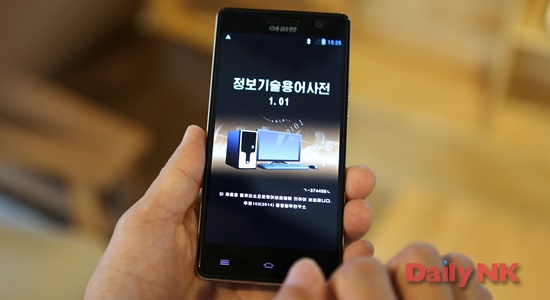Unification Media Group (UMG): The lifestyles of ordinary North Koreans are changing in tandem with the increasing availability of the latest electronic devices. Younger North Koreans born in the 1980s and 1990s are leading the trend. Reporter Seol Song Ah is here to tell us more.
Reporter Seol Song Ah (Seol): North Korea is rapidly turning into a capitalist society, as the younger generation turns to technology to share information.
Although most younger North Koreans know little about semiconductor devices, they are very adept at using modern electronic devices like mobile phones and becoming savvy at dealing with state regulations.
UMG: It’s surprising to see North Korea change rapidly, because it was a late starter in terms of using electronic devices. It wasn’t until after 2010 that mobile phones began to spread in the country.
Seol: When the first compact mobile phones were released in the North Korean markets, the locals were shocked. Talking to someone far away while walking on the street with a mobile phone was an eye-opening experience.
Until the middle of the 2000s, people had to visit each other’s houses if they had urgent business. The front doors of houses in North Korea are usually made of thick iron to deter thieves, so the rattling sound of knocking on a door was always loud. But this is a rare occurrence these days.
It seems similar to the times when humans first discovered electricity. The introduction of mobile phones has completely changed North Korean culture from the bottom upwards. Handwritten letters have all but disappeared, along with the mailman. With mobile text messages, communication has stepped into the 21st century.
UMG: It seems that North Korean society might open up more if people can communicate freely. How are things progressing in North Korea?
Seol: Smartphones have enabled new ways of sharing information and cultural entertainment like TV series. With compact mobile phones, people could only share information via calls or text messages, but now with smartphones they can share all sorts of multimedia content.
Interestingly, the North Korean authorities have played a role in accelerating this trend. The authorities fervently sold smartphones to earn ruling funds, and developed apps for the Rodong Sinmun (state-run newspaper), science and technology, and classic novels (etc.) to provide information to the residents. This seems to have whet their appetite for information.
UMG: You mentioned that North Koreans share content through smartphones. How do they actually do that?
Seol: With the introduction of smartphones, small and lightweight SD cards have also appeared in the markets. SD cards can hold enormous amounts of information and have changed everything.
The residents used to favor USB memory sticks but now SD cards have become more popular because they can be used in various devices including TVs, notetel, laptops, and mobile phones. In addition, the fact that SD cards are smaller than a fingernail is also important, because it’s easier to hide them.
In parallel, devices that can read SD cards have also become popular. USB memory sticks that SD cards can slot into for reading are common.
UMG: It’s interesting that even SD card reading devices are being sold in the North Korean markets. Can you elaborate?
Seol: The younger generation rarely uses memory sticks these days. SD cards are smaller than memory sticks and so are easier to hide during crackdowns. In North Korea, people even prefer smaller LCD TVs because they can operate on the small amount of electricity provided by their solar panels.
So the younger generation, especially those who were born in 1980s and 1990s, are becoming adept at sharing information through electronic devices. Older merchants buy smartphones to conduct business, but younger people buy them to obtain information. They watch South Korean TV series and other multimedia content all night with SD cards slotted into smartphones. This is how they are learning about the world.
UMG: We know they are severely punished if caught during crackdowns. How are they coping with it?
Seol: They have become very meticulous in avoiding the crackdowns, so the security agents have difficulty catching them in the act. It is unfortunate that I cannot share any specific details because it may endanger residents in the North.
UMG: So the younger generation of North Koreans is rapidly adjusting to the information revolution. Are SD cards officially permitted for sale in the markets?
Seol: Memory sticks are allowed, but SD cards are banned from public sale because the North Korean authorities regard them as a means of spreading foreign cultural content. In reality, merchants discreetly offer SD cards preloaded with South Korean TV series which are sold at higher prices.
UMG: How much are they?
Seol: The most popular product is the 4 gigabyte (G) SD card, while 8G SD cards are expensive and hard to get. Residents categorize SD cards according to whether they are genuine branded products or 8.3 market products, which are known to be lower in quality. Generally, SD cards produced in South Korea or Japan are regarded as genuine products, while Chinese products are called 8.3 market products.
Chinese products are said to get too hot if used for a long time, for instance if a South Korean TV series is saved and deleted three times. On the other hand, South Korean products last well even after new data storage is loaded ten times. In the Pyongsong region, Chinese products are sold for 5 RMB (about US$0.75), while South Korean products are selling for 35 RMB (about US$5.20).


















